Reviews 16 min read
Lotus Emeya: The sports car for everyday
Discover EV expert verdict...
- Fastest-charging electric production car
- Tech filled, roomy, beautifully appointed interior
- Easy to drive fast
- Porsche Taycan more engaging
- Slightly fiddly and laggy infotainment
- Cheaper options available
Overview
The Lotus Emeya marks the brand’s third electric vehicle – following on from the Evija hypercar and the Eletre SUV. The GT will undoubtedly divide opinion among the brand’s faithful, however Lotus is no stranger to four seaters. With a young family at the time, Lotus founder Colin Chapman launched the Elan +2 in 1967 and it was highly revered by the press. The design brief stated that it “must be capable of transporting two adults and two children 1,000 miles in comfort with their luggage”. Designed by Ron Hickman, who also penned the Elan, it was made wider and longer to accommodate a second row of seats and built around a steel backbone chassis.
Spurred on by the success of the Elan +2, Lotus replaced this car in 1973 with the Elite. Boasting wedge shapes, curves and straight lines, the Elite was at the leading edge of car design, but also more upmarket and refined than any previous road car from Lotus. Based on the Elite but with a fastback body style, the lower priced Eclat followed a few years later, and was superseded in 1982 by the Excel which ran the same engine, but with a modified version of the chassis and altered bodywork. Production ended in 1992, marking the end of Lotus’ four-seater experiment, but we mustn’t forget the Lotus Carlton launched to universal acclaim in 1990. Although based on a Vauxhall, it was manufactured at the Lotus Hethel facility and featured substantial engineering changes from Lotus.
Thirty-two years later Lotus presents us with its premium saloon car… Question is does the Emeya successfully build on the brand’s solid foundations and live up to its rich heritage? Discover EV attends the global launch to find out.
Driving
The Lotus Emeya Hyper Grand Tour gave influential lifestyle, design, tech and motoring journalists the opportunity to spend one day behind the wheel of the S and another with the R, driving across two countries encountering various types of road – from classic tarmac Alpine hairpins to less than perfect tarmac tracks through villages and derestricted stretches of German autobahn. Lotus clearly had an agenda and this was the perfect way to evaluate whether its Emeya is the complete grand tourer package.
The Emeya is built on the same Electric Premium Architecture (EPA) that already underpins the Eletre, but it has much less work to do because the car is slightly lighter (2590 vs 2640kg) and has a much lower centre of gravity. It also has a different wheelbase to get the proportions of the car just right, and allow for new battery cell technology (more on that later). It’s 36mm longer and 100mm wider, but up to 171 shorter in height and 53mm closer to the ground (depending on wheel options), and that translates into a car that is so much more dynamic, precise and powerful on the road compared to its bigger sibling.
My opinion, together with the majority of other motoring hacks, was that the S was the best all-rounder, but each model has their own warrants.
With up to 905hp (675kW) and 726lb-ft of torque the Emeya R is able to accelerate from 0-62mph in under 2.8 seconds and 0-124mph in 9 seconds, making it one of the fastest electric GTs in the world. It is blisteringly quick, and it will keep on pulling thanks to the Taycan-imitating two-speed transmission (S has one-speed) – although sadly it doesn’t feel quite as smooth as Porsche’s system.
It shares the same electric power steering with two modes and multi-link active air suspension combining dual-chamber air springs and continuous damping control as the S, but as standard gets active rear wheel steering and intelligent anti-roll control as part of the Dynamic Handling Pack. The former helps improve cornering support when entering a bend at high speed, while on bumpy roads the stiffness is reduced, thus improving comfort, and the latter reduces the turning radius at low speed making U-turns easier but at high speed improves handling stability.
The R also boasts 10 (front) and four pot (rear) calipers clamped to 420mm and 410mm carbon ceramic brake discs respectively (as opposed to 6 piston front and floating caliper rear setup with 412mm and 397mm steel brake discs for the S) to better haul in the extra power. Regen and frictin brakes blended seeamlesly on both models, but the R's anchors felt grabby and not as progressive.
Both cars were equipped with the optional Lotus Active Aero Pack (which includes the active air dam projecting or retracting a front spoiler below the bumper, to reduce drag or increase downforce, and an active rear diffuser and spoiler that does a similar job). Together they deliver a drag coefficient Cd of 0.21 or a downforce of over 150kg.
Now, here’s the thing on paper the R should be a lot more fun. And don’t get me wrong – it is, I never bored of testing the car’s launch control in ‘Track’ mode, nor the relentless acceleration on the derestricted sections of Autobahn, but in terms of all-round usability the S was the better option (not to mention a lot cheaper – £129,503 vs £165,053 for the versions we were driving!). It is perhaps worth noting that the car was fitted with the aforementioned Dynamic Handling Pack as an option, and that the S was better in ‘Sport’ mode while the R was better in ‘Tour mode’. There is also Range and Individual where the driver can control the ride height, air suspension stiffness, acceleration response and even their seat (with adjustable side bolsters).
That aforementioned air suspension feels the road ahead at a rate of 1000 times per second, constantly making dynamic adjustments, and it certainly works. At one point while coming down a mountain pass the system obviously felt that my co-driver was driving too fast and intervened with a dab of the brakes! A bit annoying, yes, and all but impossible to get the rear end out, but no matter how hard you drove it, the car wasjust unfazed. It was dare I say, too safe, I would have liked it to be a little more playful.
Yes, the cars today are very different, but to some degree it still shares the Lotus DNA – driver friendly, effortless power, superbly accurate steering – and just like the Lotus Elan +2 it is useable on track (R more so), but also on everyday journeys whether driving your children to school or having a blast on the local B-roads. The car can do it all.
Range and running costs
With a combined range of 379 miles for the S and 300 for the R, both are capable of charging from 10 to 80 percent in 14 minutes, using a 400kW DC fast charger. This was validated by leading global consulting firm P3, who recently published their independent 2023 P3 Charging Index (see page 9-10) where it beat the Mercedes EQS, BMW i7, Tesla Model Y, Genesis G80, Hyundai Ioniq 6, Nio ET5 and BYD Atto 3.
The report also found that Emeya can reach a peak charging power of 402kW, resulting in an average charging power of 331kW, and can gain up to 310km of range in 10 minutes during optimal conditions. This is thanks to a new cell-to-back battery structure, which means that 20 per cent more cells can be packaged in the same space, compared to a standard module architecture, and a new cooling system architecture that is designed to improve the thermal performance and efficiency of the battery.
Lotus say Emeya is competitively priced in the luxury GT segment, which it is, (although you could also go for the cheaper Tesla Model S and entry level Porsche Taycan), and if available via the EV Salary Sacrifice Scheme (or you’re stinking rich) it makes total sense. I doubt many small business owners would take the risk on the offset of tax vs inevitable depreciation, even if they’re able to charge at home.
Anyway, for those interested, it is available in three variants: the EMEYA entry point for the range starts at £89,500, a well-equipped EMEYA S from £101,950 and EMEYA R, the flagship, starts at £129,950. Emeya has entered production with customer deliveries in China, starting in March 2024. On overall driving impressions, range and price, the S makes the most sense.
Emeya will begin delivering to mainland European Customers from July 2024, with global markets to follow.
Design
In the words of Ben Payne, VP of Design for the Lotus Group, the Emeya hyper-GT “was an opportunity for Lotus to bridge back from the Eletre product, towards the sports car territory that the brand is more known for with a lower, sleeker product”. At the same time, Lotus had to also factor in the current design direction and the technical capabilities and packages which underpin their cars.
Since Geely’s takeover it has been the Evija hypercar that has reset the design direction for the Lotus brand. The main concept of that vehicle is the aerodynamic principle of porosity, allowing air to pass through the car rather than just be pushed out of the way so you’ll find a network of ducts and passages all around the car. They also built on things like the DNA of the L-shaped DRL graphic that appears inside the headlamps on the Evija, together with the dual L-shaped, upturned wingtip graphic which sits on the nose of the Emeya.
While there are very strong links in terms of building consistency with the Eletre and Evija, there are also some very deliberate design cues where they have taken inspiration from the past such as the one single sharp line that connects nose-to-tail, which was so dogmatic of the Esprit and the bold, muscular wheel arches from cars like the Eleven, and then that cab forward stance which define a lot of the road and race machines of the 1950s and 1960s.
The design also has to echo the engineering passion and credibility of the Lotus brand including all of those aforementioned active systems. Lotus has always had a very diverse aesthetic and many of the innovations were revolutionary rather than evolutionary; this car is exactly that. I’ll give you an example – that RGB dynamic LED rear light bar is the thinnest ever seen on any production car.
And it’s a theme that translates into the cabin, with a further blade of light – and the ‘ribbon of technology’ first seen in the Eletre – creating a shared user interface for Emeya’s front-seat passengers. The ultra-thin winglets which flow into the centre of the dashboard are a subtle nod to Colin’s famous passion for reducing weight everywhere, while also highlighting the design team’s attention to contemporary craftsmanship.
Overall, the interior is rather fabulous actually, with a beautiful blend of luxury materials and tactile surfaces. Clive Chapman, son of Colin and Hazel, even admitted in a podcast sent to journalists ahead of the launch that his mum would like the cabin in particular as she used to help with the cabins of both the cars and boats (I didn’t know Lotus made boats either!). It certainly raises the game when you think to Lotus’ of old.
Materials have been selected based on performance, aesthetic, durability and sustainability so there’s a nice mix of leather, Alcantara and repurposed cotton scraps from the fashion industry. Knurled metal on all interior touchpoints further enhance the sense of refinement, together with the exposed carbon fibre elements, which is a nice nod to the brand’s racing heritage.
It also shares the SUV’s intelligent 12.6” digital driver display and 15.1” OLED centre console screen, boasting beautifully crisp, clear graphics and up to seven configurable screens. It is better than most, but slightly laggy and we did have a few blips with it, hopefully solvable with over-the-air updates. Sound is delivered by KEF’s award-winning Uni-Q™ speaker design and Uni-Core™ space-saving subwoofer enclosure, plus Dolby Atmos enabled 3D surround sound system – and I have to say is outstanding.
Comfort and practicality
A good GT should be capable of eating up the miles while leaving you feeling fresh – and this is where the Emeya exceeds itself. It is roomier and far more comfortable than the Porsche. - wherever you're sat! You can opt for either a four or five seat layout but either way rear passengers benefit from an 8” TFT screen and have tons of head and leg room.
The boot offers up to 509 litres of space, while the frunk has 31 litres of additional storage, and there’s plenty of useable stowage including the door bins, glovebox and centre console.
Both cars are well equipped as standard – highlights include: 21" 5 spoke forged alloys, four-way electric adjustable steering column - with memory rear privacy glass, glass roof, multifunction heated steering wheel and 12 way power adjustable front seats with integrated headrests. Both cars also get the Touring Pack (soft door close, hands free tailgate, illuminated side sills, configurable ambient lighting), Interior Carbon Pack (carbon head-up display cover, centre console, door button panel, seat control panel and overhead console).
The only real difference between the two models being the R gets all of those aforementioned dynamic handling features and the carbon pack for the exterior (roof panel, front lip spoiler, lower rear diffuser, side mirror cases and rear lip spoiler), while the S gets the Parking Pack (enables automatic detection of parking spaces, activated through the vehicle or smartphone app, and will take over the steering, forward and reverse operations of the vehicle to complete the parking), and the Comfort Seat Pack (includes front 2-way cushion extension, 2-way headrests, 4-way side bolsters, ventilated seats, massage seats and if rear 5 seat layout heated seats).
There’s also a full suite of advanced driver assistance systems featuring an innovative deployable LIDAR system that is fully future-proofed to deliver Level 4 autonomous driving capability. Don't bother with the camera-based door mirrors - it's impossible to determine field-of-view and focal depth.
It’s is worth noting about the ambient lighting functions that communicate intuitively with the driver – for example when getting an incoming phone call, elements of the dashboard will pulse to notify the driver of this, and when charging, it will change to green, and the advanced intelligent panoramic glass roof, which you can switch between opaque and clear, but also turn individual sections off to block out direct sunlight while keeping the rest of the roof transparent. Pretty cool.
Customers can also choose from five interior themes: Magnetite, Jasper, Quartz, Gold and Carnelian and six exterior colours including Boreal Grey, Fireglow Orange, Solar Yellow, Akoya White, Stellar Black and Kaimu Grey.
Verdict
Any Lotus car has a rich legacy to live up to. From its success in Formula One to the iconic Lotus Esprit built from 1976 to 2004, the name Lotus conjures up innovation, performance, design, engineering, ingenuity, passion and rebelliousness. A Lotus today will never take us back to those heady, petrol fumed thrilling days of yesterday – because automotive engineering in general has moved on with extremely stringent design and manufacturing regulations and legal constraints determining what a brand can and cannot do, not to mention all of the various boxes that need ticking in terms of health, safety, sustainability, and so on.
But this car is where Colin wanted to take the company. You see, there was something called the Eminence Project, which he started with Italian designer Paolo Martin. The brief was ‘ four-door, four seat,V8 and revised packaging details on 2830mm wheelbase’ while in line with Colin’s philosophy – light, low and racy. “It was classic and sporty, a bit coupe and a bit sedan” reminisces Paolo before adding “nobody had ever made a sports car like this before. It was more family car, yet still very sporty”. He presented the final model at the Lotus headquarters in Hethal at the end of 1980, but sadly it remained Colin’s unfulfilled dream following a sudden heart attack a few years later.
Whether you approve of the Emeya or not – it is there to diversify product line up and enable Lotus to bring more customers to the brand. It's about sustainability of a business model. A two-seater sports car does not suit everyone’s lifestyle, and by producing larger, more practical or more luxurious vehicles like the Emeya, it is an opportunity to open up the Lotus experience to more potential customers. But more importantly to then produce something fun - think low-slung sprts car - no bigger than a Porsche Cayman and to cost around £75k apparently. Now that would be exciting!
In that aforementioned podcast, Clive said: “It was really part of dad's enduring ambition to always push Lotus forward into new areas.” And as he recalled fond memories of the family Mercedes 6.9 saloon he added, “he was always very impressed with that, and certainly Lotus is going into Mercedes territory with this car, which is, I think the ultimate goal that Colin and Hazel had – to realize that kind of level”
I actually think it’s a lot better than the Mercedes-Benz EQE, and Tesla can keep its Model S. It is by Lotus’ own words softer than the Porsche Taycan, but people might like that! Lucid was another name that came up when I quizzed Lotus about rivals…. But I’m yet to drive that,
I’ll leave you with Clive's last words, as I think it best sums up this car, but also puts stop to all those who keep preaching that the Geely vehicles can never truly represent the brand: “I think they'd [Colin and Hayzel] be thrilled. It's a fabulous, product, a fabulous car. It's got the Lotus badge on the front and it pushes the boundaries in lots of ways. It's not a predictable product. It's something exciting technically”.
Key Specs
2024 Lotus Emeya
Price (RRP OTR): From £89,500, £129,503 (Emeya S as tested). £165,053 (Emeya R as tested)
Top speed: 154mph (Emeya S), 156mph (Emeya R)
0-62mph: 4.2 seconds (Emeya S), 2.8 seconds (Emeya R)
Power: 450kW / 603hp (Emeya S), 675kW /905hp (Emeya R)
Torque: 524lb-ft (Emeya S), 726lb-ft (Emeya R)
Driving range (combined): 379 miles (Emeya S), 300 miles (Emeya R)
Charging time: 10 to 80%, via 350 kW DC Rapid, 18 minutes; 0-100%, via 22 kW AC,
5.5 hours
Insurance group: 50
Vehicle warranty: 5 years / 120,000 miles
Battery/electric drive systems warranty: 8 years / 125,000 miles (battery guaranteed to maintain at least 70% of health)

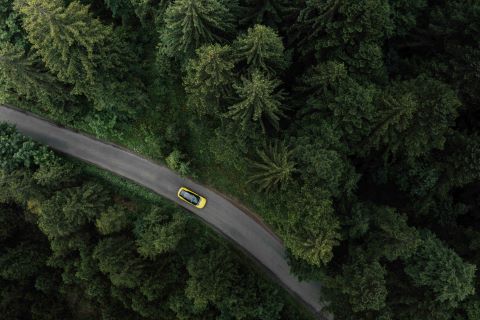

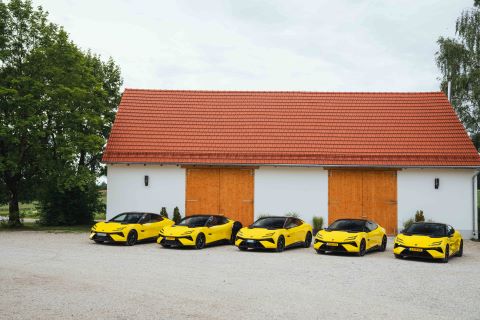

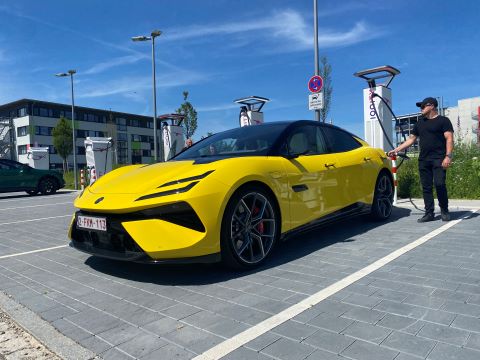


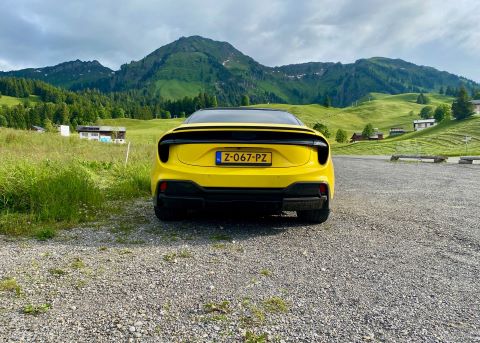
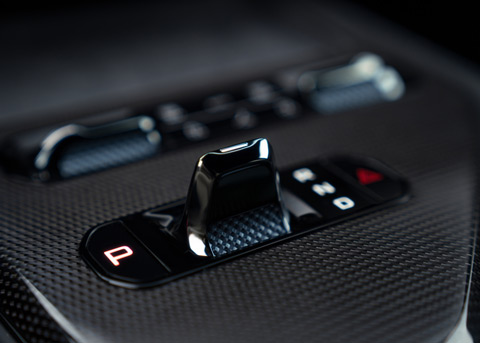

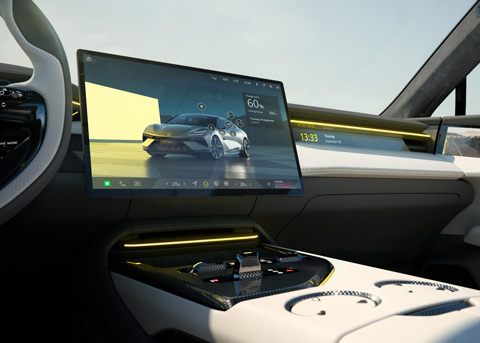


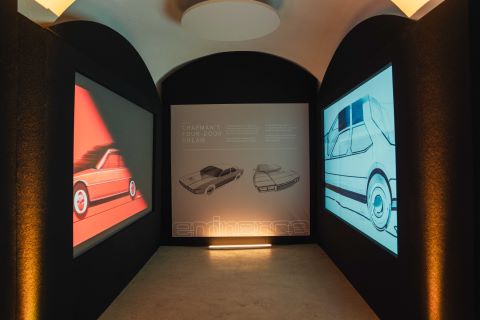



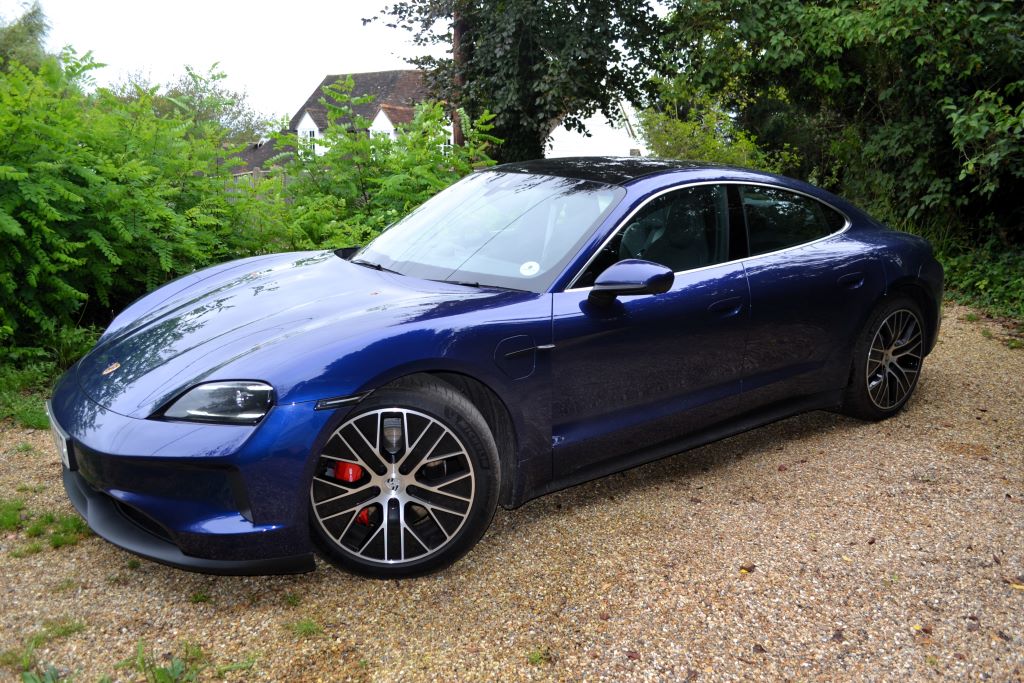

1024px.jpg)


Comments (0)
Be the first to write a comment
Login/ Signup